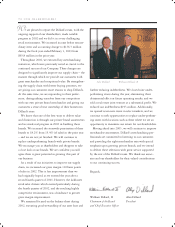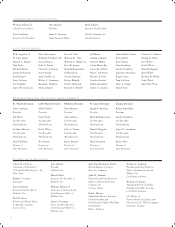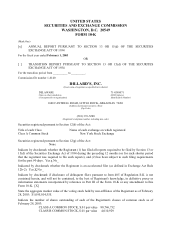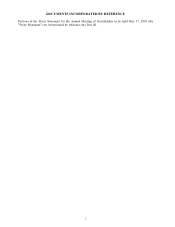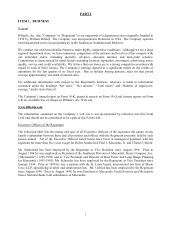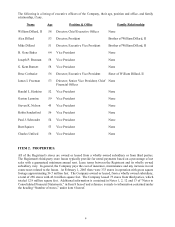Dillard's 2002 Annual Report Download - page 13
Download and view the complete annual report
Please find page 13 of the 2002 Dillard's annual report below. You can navigate through the pages in the report by either clicking on the pages listed below, or by using the keyword search tool below to find specific information within the annual report.(1) During fiscal 2002, the Company adopted Statement of Financial Accounting Standards No. 142, “Goodwill
and
Other
Intangible Assets”. See Management’s Discussion and Analysis of Financial Condition and
(2) During fiscal 2000, the Company changed its method of accounting for inventories under the retail method.
See
Management’s Discussion and Analysis of Financial Condition and Results of Operations.
(3) Pro forma effect of applying the cumulative effect of accounting change for inventories in fiscal 2000.
ITEM 7. MANAGEMENT'S DISCUSSION AND ANALYSIS OF FINANCIAL
CONDITION AND RESULTS OF OPERATIONS.
General
Net Sales. Net sales include sales of comparable stores, non-comparable stores and lease income on leased
departments. Comparable store sales include sales for those stores which were in operation for a full period in both
the current month and the corresponding month for the prior year. Non-comparable store sales include sales in the
current fiscal year from stores opened during the previous fiscal year before they are considered comparable stores,
sales from new stores opened in the current fiscal year and sales in the previous fiscal year for stores that were closed
in the current fiscal year.
Service Charges, Interest and Other Income. Service Charges, Interest and Other Income include interest and
service charges, net of service charge write-offs, related to the Company’s proprietary credit card sales. Other
income relates to joint ventures accounted for by the equity method, rental income, shipping and handling fees and
gains (losses) on the sale of property and equipment.
Cost of Sales. Cost of sales includes the cost of merchandise sold, bank card fees, freight to the distribution centers,
employee and promotional discounts and direct payroll for salon personnel.
Advertising, selling, administrative and general expenses. Advertising, selling, administrative and general
expenses include buying and occupancy, selling, distribution, warehousing, store management and corporate
expenses, including payroll and employee benefits, insurance, employment taxes, advertising, management
information systems, legal, bad debt costs and other corporate level expenses. Buying expenses consist of payroll,
employee benefits and travel for design, buying and merchandising personnel.
Depreciation and amortization. Depreciation and amortization expenses include depreciation on property and
equipment and amortization of goodwill prior to February 3, 2002.
Rentals. Rentals include expenses for store leases and data processing equipment rentals.
Interest and debt expense. Interest and debt expense includes interest relating to the Company’s unsecured notes,
mortgage notes, credit card receivables financing, the Guaranteed Beneficial Interests in the Company’s subordinated
debentures, amortization of financing intangibles and interest on capital lease obligations.
Asset impairment and store closing charges. Asset impairment and store closing charges consist of write downs to
fair value of under-performing properties including property and equipment and exit costs associated with the closure
of certain stores. Exit costs include future rent, taxes and common area maintenance expenses from the time the
stores are closed.
Extraordinary gain (loss). Extraordinary gain (loss) consist of gains (losses) on the repurchase of outstanding
unsecured notes prior to their related maturity dates net of the write-off of unamortized deferred financing costs
relating thereto and the retirement of Reset Put Securities (“REPS”) prior to their maturity dates.
Cumulative effect of accounting change. Effective February 3, 2002, the Company adopted Statement of Financial
Accounting Standards (“SFAS”) No. 142, “Goodwill and Other Intangible Assets”. SFAS No. 142 changes the
accounting for goodwill from an amortization method to an “impairment only” approach. Under SFAS No. 142,
goodwill is no longer amortized but reviewed for impairment annually or more frequently if certain indicators arise.
The Company tested goodwill for impairment as of the adoption date using the two-step process prescribed in SFAS
No. 142. The Company identified its reporting units under SFAS No. 142 at the store unit level. The fair value of
7
Results of Operations.


